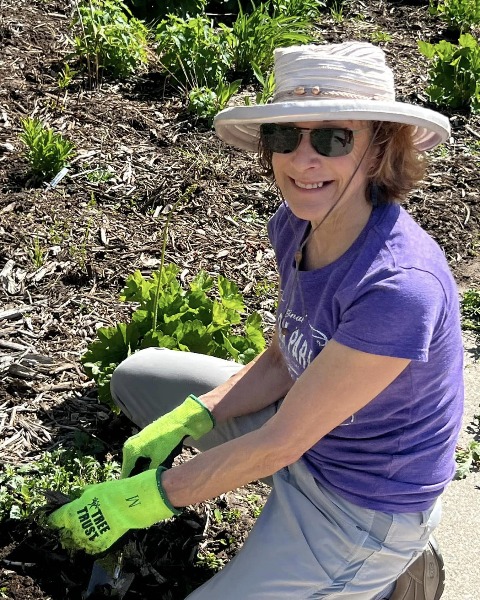Climate Action
Bee the Change: Habitat from Yard to Landscape
Monday, April 15, 2024
1:00 PM - 2:00 PM CT
Location: Ballroom A
CM | 1 Sustainability and Resilience
Division Endorsement: Food Systems Division

Suzanne Sutro Rhees, AICP (she/her/hers)
Special Project Coordinator
Minnesota Board of Water and Soil Resources
St. Paul, Minnesota
Dan B. Shaw
Senior Ecologist
Minnesota Board of Water and Soil Resources
St.Paul, MN
Moderator and Speaker(s)
Speaker(s)
The public, as well as a diversity of partners, are helping build a movement to protect pollinators and increase resiliency to climate impacts such as drought, flooding, soil erosion, and loss of key species. Minnesota’s “Lawns to Legumes” program provides small grants to neighborhood residents and nonprofits to create patches and corridors of pollinator habitat. With over 6,000 funded projects, the concept behind this tremendously popular program is now being extended to community spaces, parks, schools and utility corridors. The thousands of pollinator plantings being installed through the program offer an oasis for pollinators and provide a wide range of benefits, from soil health and water quality to citizen empowerment. Expansion of these efforts to city parks, solar installations and other types of landscapes is further protecting pollinators, building landscape resiliency, and engaging the public. Empowering individuals to take action in the face of a changing climate can benefit not only the individual but the community and the larger landscape. By prioritizing projects in communities of color and indigenous and low- income communities, the program also prioritizes equity, creating a model for other state grant programs. This session will focus on key steps to building and maintaining this collaboration.
Access this session with closed captions through Wordly
Access this session with closed captions through Wordly
Learning Objectives:
- Evaluate the benefits of developing a pollinator habitat program in their own community, whether focused on individual efforts, community spaces, and/or utility installations and corridors.
- Identify potential partnerships and funding sources that can contribute to such an effort, as well as common regulatory barriers to overcome.
- Understand methods that can be used to prioritize environmental justice in selecting projects and applicants.
